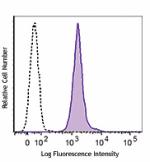- Clone
- 15G10 (See other available formats)
- Regulatory Status
- RUO
- Isotype
- Mouse IgG2b, κ
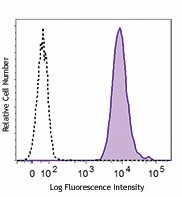
-

Human cervical carcinoma cell line, HeLa, was incubated with (top) or without (bottom) Trichostatin A (100 ng/ml, overnight), then treated with FOXP3 Fix/Perm Buffer Set. Cells were then stained with anti-acetylated lysine (clone 15G10) PE/Cyanine7 (fille -

| Cat # | Size | Price | Quantity Check Availability | ||
|---|---|---|---|---|---|
| 623407 | 25 tests | $176.00 | |||
| 623408 | 100 tests | $382.00 | |||
Proteins are reversibly and dynamically acetylated on the ε-amino group of lysine by acetyltransferases and deacetylated by deacetylases. This post-translational modification can regulate protein function (interactions with other proteins and DNA binding). Histones and transcription factors (PCAF, p53, p300, etc) appear to be the major targets of acetyltransferases. Acetylation is usually associated with chromatin remodeling and transcriptional activation, although in some cases (telomeres) it is associated with gene silencing. The 15G10 antibody recognizes acetylated lysine residues on proteins.
Product Details
- Verified Reactivity
- Species independent
- Antibody Type
- Monoclonal
- Host Species
- Mouse
- Immunogen
- Acetylated protein mixture
- Formulation
- Phosphate-buffered solution, pH 7.2, containing 0.09% sodium azide and BSA (origin USA)
- Preparation
- The antibody was purified by affinity chromatography and conjugated with PE/Cyanine7 under optimal conditions.
- Concentration
- Lot-specific (to obtain lot-specific concentration and expiration, please enter the lot number in our Certificate of Analysis online tool.)
- Storage & Handling
- The antibody solution should be stored undiluted between 2°C and 8°C, and protected from prolonged exposure to light. Do not freeze.
- Application
-
ICFC - Quality tested
- Recommended Usage
-
Each lot of this antibody is quality control tested by intracellular immunofluorescent staining with flow cytometric analysis. For flow cytometric staining, the suggested use of this reagent is 5 µl per million cells in 100 µl staining volume or 5 µl per 100 µl of whole blood.
- Excitation Laser
-
Blue Laser (488 nm)
Green Laser (532 nm)/Yellow-Green Laser (561 nm)
-
Application References
(PubMed link indicates BioLegend citation) -
- Kuo HP, et al. 2010. Sci Signal. 3:Ra9. PubMed
- Product Citations
-
- RRID
-
AB_2565507 (BioLegend Cat. No. 623407)
AB_2565507 (BioLegend Cat. No. 623408)
Antigen Details
- Structure
- Proteins are acetylated by the reversible transfer of acetyl-CoA to the ε-amino group of lysine
- Function
- Post-translational modification of proteins by acetyltransferases and deacetylated by deacetylases to regulate protein-protein and protein-DNA interactions
- Biology Area
- Cell Biology, Chromatin Remodeling/Epigenetics
- Antigen References
-
1. Wang S, et al. 2004. Novartis Found. Symp. 259:238.
2. Legube G, et al. 2003. EMBO Rep. 4:944.
3. Chen LF, et al. 2003. J. Mol. Med. 81:549. - Gene ID
- 8850 View all products for this Gene ID
- UniProt
- View information about Acetylated Lysine on UniProt.org
Other Formats
View All Acetylated Lysine Reagents Request Custom Conjugation| Description | Clone | Applications |
|---|---|---|
| Purified anti-Acetylated Lysine | 15G10 | WB,ICC |
| PE anti-Acetylated Lysine | 15G10 | ICFC |
| Alexa Fluor® 647 anti-Acetylated Lysine | 15G10 | ICFC |
| PE/Cyanine7 anti-Acetylated Lysine | 15G10 | ICFC |
Compare Data Across All Formats
This data display is provided for general comparisons between formats.
Your actual data may vary due to variations in samples, target cells, instruments and their settings, staining conditions, and other factors.
If you need assistance with selecting the best format contact our expert technical support team.
-
Purified anti-Acetylated Lysine
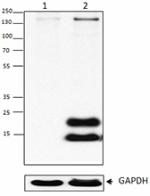
Western blot analysis of HeLa untreated (lane 1) and HeLa st... 
Untreated HeLa cells (upper panel), or overnight nocodazole ... -
PE anti-Acetylated Lysine
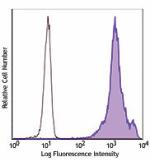
Human cervical carcinoma cell line, HeLa, was incubated with... 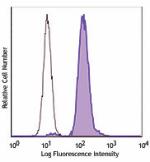
-
Alexa Fluor® 647 anti-Acetylated Lysine
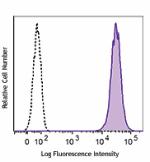
Human cervical carcinoma cell line, HeLa, was incubated with... 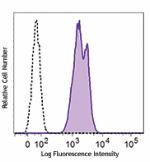
-
PE/Cyanine7 anti-Acetylated Lysine

Human cervical carcinoma cell line, HeLa, was incubated with... 